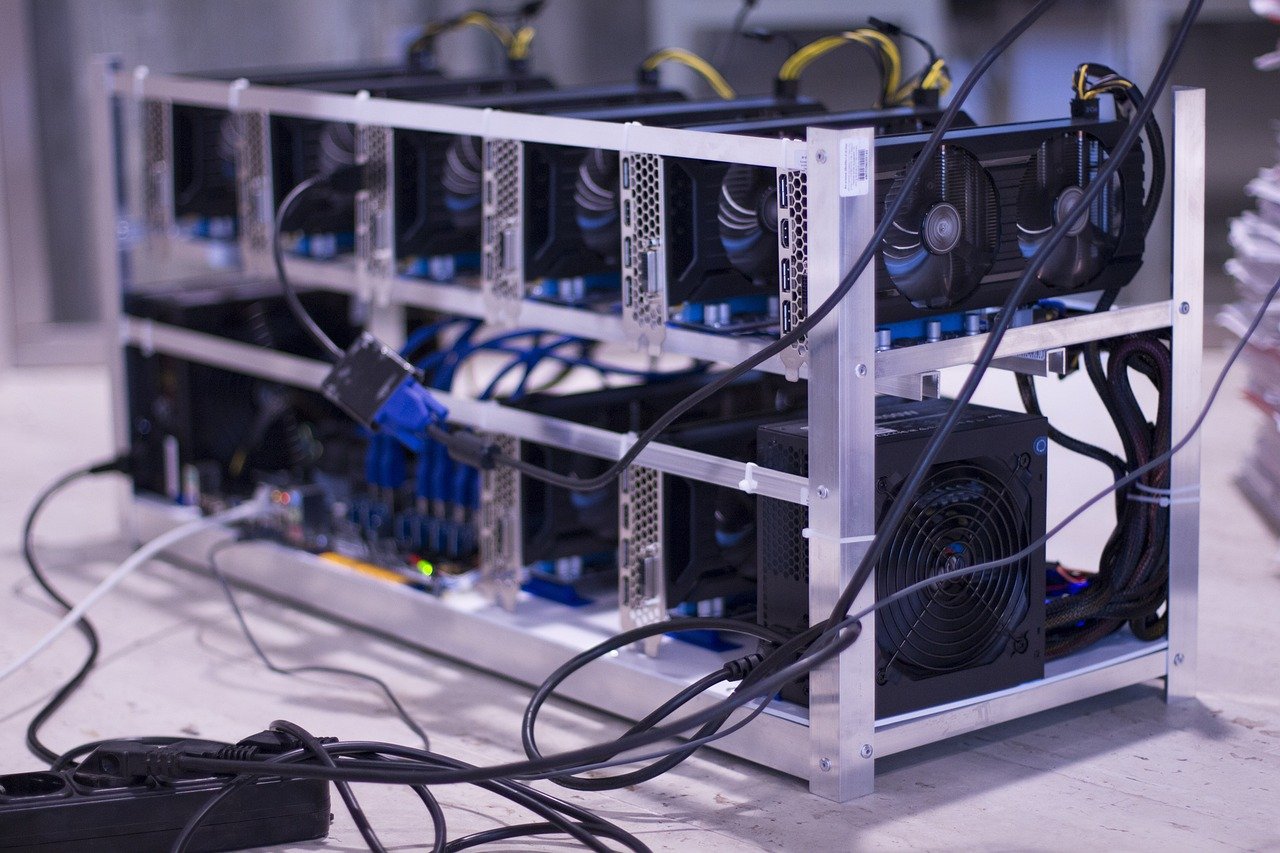
Navigating the complex universe of cryptocurrency, you may feel overwhelmed by its ever-changing landscape, new terminology and the avalanche of queries. How or where does one purchase Luna or Tiger King or Bone crypto? What is shorting crypto or buying new ones before listing? What does APY stand for? Are you even of the right age to invest? What is the cryptic meaning behind ‘pegging’ and ‘crypto whale’? With topics like spot trading, crypto brokers, crypto-friendly banks, techniques to transfer crypto investments, and ways to secure profits without selling – this dynamic domain seems to present more questions than answers. Fret not, as this article is designed to decrypt the world of crypto for you, breaking down the complicated jargon into comprehensive insights and accessible knowledge. Whether it’s about crypto staking, Robinhood, Pi crypto’s worth or the operation of crypto-malware – every question has an answer. Remember, there is no such thing as stupid questions, only valuable insights waiting to be unraveled – so let’s get started!
Understanding Spot Trading in Crypto
So, you’ve heard about the revolutionary world of cryptocurrencies and you’re more than a little intrigued. Now, you might be wondering, what is spot trading in crypto? Simply put, spot trading refers to the purchase or sale of a financial instrument, like a cryptocurrency, for immediate delivery and settlement on the ‘spot date’, usually within two business days. It’s a fundamental transaction in the financial world, and understanding it can help you navigate the bustling trade floors of crypto exchanges.
Definitions and Key Concepts
In spot trading, you’re dealing with what’s known as the ‘spot price.’ This is the current market price at which a cryptocurrency can be bought or sold for immediate delivery. Unlike futures trading which involves delivery at a later date, spot trading is all about the here and now. The total cost is settled ‘on the spot’ and ownership changes hands immediately.
Spot Trading vs. Futures Trading
While spot trading involves instant transactions, futures trading is essentially a legal agreement to buy or sell a particular commodity asset (like crypto) at a predetermined price in the future. In futures trading, there’s a speculative nature as traders try to predict what the asset’s price will be down the line. You have buyers hoping prices will rise and sellers hoping the opposite. Spot trading, on the other hand, focuses on the immediate, day-to-day price movements of the crypto market.
The Role of Cryptocurrency Exchanges
Cryptocurrency exchanges serve as platforms for spot trading. These online marketplaces facilitate the real-time exchange of cryptocurrencies for other assets such as digital or, more commonly, fiat currencies. They give you visibility into the prices at which others are willing to trade, hence ensuring transparency in the market.
Importance in the Cryptocurrency Ecosystem
Spot trading plays a crucial role in the cryptocurrency ecosystem. It provides the necessary liquidity and sets the immediate market value for cryptocurrencies. In essence, the spot market serves as the foundational infrastructure for cryptocurrencies and allows for efficient trading and price discovery.
Spot Trading Exchanges and Platforms
Now that you’re familiar with the concept of spot trading, you’d probably like to get in on the action yourself. But where do you start? There exist several platforms where you can engage in spot trading.
Criteria for Choosing a Spot Exchange
Choosing the right spot exchange is crucial to your success in crypto trading. Factors to consider include security features, user interface, volume and liquidity, transaction fees, available trading pairs, and customer support. While getting the lowest trading fees might be tempting, don’t skimp on security. In the trading world, it is not advisable to learn the importance of tight security features from experience.
Popular Cryptocurrency Exchanges for Spot Trading
Popular exchanges like Binance, Coinbase, and Kraken offer spot trading services, each with their own unique strengths and service features. Binance, for example, is known for its wide variety of supported coins, while Coinbase is applauded for its user-friendly interface.
Registration and Verification Processes
To get started on these platforms, you’ll typically need to register and go through a verification process in line with KYC (Know Your Customer) regulations. This process differs across platforms but often involves providing an email address, setting up a password, and verifying your identity using government-approved identification documents.
Security Measures for Traders
In addition, these platforms implement several security measures to ensure safe trading. Two-factor authentication, withdrawal whitelists, and cold storage for funds are some of the features you can expect to find. Remember, keeping your investments secure should be as important as making profitable trades.
Executing a Spot Trade
Spot trading might seem daunting for beginners, but it eventually becomes straightforward with understanding and practice.
Market Orders vs. Limit Orders
In executing a spot trade, you can place a market order or a limit order. A market order is an order to buy or sell immediately at the best available price, while a limit order is an order to buy or sell at a specific price or better. They allow you to have more control over the buying or selling price.
Understanding Order Books
Order books contain a list of the buy and sell orders and are essential in understanding the potential price movement. They will show you where the demand (buy orders) and supply (sell orders) lie.
The Role of Market Makers and Takers
Market makers and takers are key players in the trading ecosystem. Market makers place orders that aren’t immediately matched with existing orders, adding liquidity to the order book, while market takers take liquidity off the order book by matching orders with those of the market makers.
Transaction Fees and Costs
Also, be aware of transaction fees and other costs. Platforms typically charge fees for deposits, withdrawals, and trades, often as a percentage of the total trade value. Keeping withdrawals to a minimum can help to limit such costs.
Benefits of Spot Trading
Spot trading isn’t popular without reason. It holds several benefits for traders.
Immediate Ownership Transfer
On executing a trade, you instantly become the owner of the cryptocurrency. You can then choose to hold or exchange it based on your trading strategy or goals.
Price Transparency
Due to the real-time nature of spot trading and the availability of order books, price transparency is guaranteed. You can see at what price others are willing to buy or sell, ensuring you always get a fair deal.
Liquidity and Volume
The spot market typically enjoys high trading volumes, consequently offering high liquidity. This means a faster trade execution, which is essential in a volatile market like crypto.
Simpler Tax Implications
Unlike futures trading, spot trading has relatively simpler tax implications since you’re dealing with actual assets. This, however, doesn’t mean you should take crypto taxation lightly; always keep meticulous records of your trades.
Risks Associated with Spot Trading
Despite the allure of spot trading, it’s not without its risks. Awareness and understanding of these risks can go a long way to mitigate potential pitfalls.
Market Volatility
The crypto market is famously volatile. Prices can soar or plummet in seconds, either bringing hefty profits or significant losses. Hence, trading requires brisk decision-making and a keen eye on market trends.
Lack of Regulation
The crypto market operates independently of a central regulator. This lack of a regulating authority can sometimes lead to dramatic price manipulations and scams.
Security Threats
Privacy breaches, hacking threats, and other security issues are a constant concern. No matter how secure a platform may be, always ensure to safeguard your private keys and employ strong security practices.
Counterparty Risks
Counterparty risk, or the worry that the part of the trade you’re transacting with will fail to meet their obligations, is another risk tied to spot trading. Proper research and sticking to reputable exchanges can help negate this risk.
Spot Trading Strategies
While patience, quick decision-making, and staying updated with market news will keep you afloat in the trading world, having a sound and informed strategy will give you an edge and help fetch good returns.
Technical Analysis
Technical analysis involves studying statistical trends gathered from trading activity, such as price movement and volume. By analyzing historical data, traders attempt to predict future price movements.
Fundamental Analysis
In fundamental analysis, traders closely follow the news surrounding the cryptocurrency’s underlying technology, or other related financial and economic news, to predict future price movements.
Hedging and Diversification
Hedging and diversifying aren’t just concepts for your investments. Rather, they can form part of your trading strategy, too. Holding different cryptocurrencies and shorting some when expecting a market down move can help distribute risk.
Long Term Holding vs. Day Trading
Long-term holding (also known as HODLing in the crypto world) involves buying and storing cryptocurrencies for a long period, while day trading involves making trades within shorter timeframes. Each has its advantages and disadvantages and can be used depending on your trading objectives and risk tolerance.
Advanced Spot Trading Tactics
Taking your trading to the next level involves employing advanced tactics. But this should be done cautiously and armed with sufficient knowledge.
Stop Loss and Take Profit Orders
Stop loss and take profit orders can come in handy in managing risks and protecting profits. A stop loss supports selling your asset when the price goes too low, while take profit does so when the price reaches a satisfying high.
Arbitrage Opportunities
Arbitrage involves taking advantage of the price differences of the same asset across different exchanges. By buying at a lower price and selling at a higher price, traders can bank in profits. However, it requires careful coordination and speed as differences often equalize rapidly.
Using Trading Bots and Algorithms
Trading bots and algorithms automate the trading process based on a predefined set of rules. They can execute trades faster, operate round the clock, and help eliminate emotional trades.
Margin Trading and Leverage in Spot Trading
Margin trading lets you borrow funds to trade larger positions than your account balance. While this can multiply potential profits, it can do the same for losses. Trading on margin involves risk and should be approached with caution.
Understanding Spot Trading Terms
Navigating the crypto trading landscape involves understanding its jargon. Here’s a rundown of some common lingo.
What Does ‘Going Long’ or ‘Shorting’ Mean
‘Going long’ means buying a cryptocurrency with the expectation that its price will rise, while ‘shorting’ involves selling a cryptocurrency in the expectation that its price will fall and you can buy it back at a lower price.
The Significance of APY in Spot Trading
APY stands for Annual Percentage Yield. It’s especially relevant if you’re planning to hold a particular cryptocurrency for a year. It represents the returns you can expect from holding for that period, including compounding.
What Are Crypto ‘Whales’
Crypto ‘Whales’ are individuals, or entities, holding a large amount of a particular cryptocurrency. They have the potential to impact prices with their large orders.
Deciphering Crypto Slang and Jargon
The crypto community is known for its unique lingo – ‘HODL,’ ‘bag holder,’ ‘FOMO,’ ‘FUD,’ etc. Understanding these terms will make you feel at home in the vibrant crypto community and keep you from misunderstanding crucial information.
Compliance and Legal Aspects
While the crypto world embraces decentralization, it does not operate in a legal vacuum.
Regulatory Framework for Spot Trading
Regulations vary between jurisdictions, from comprehensive regulatory structures to complete bans. It’s important to understand the legal requirements in your location and ensure your trading activities stick to them.
Know Your Customer (KYC) and Anti-Money Laundering (AML)
Binance, Kraken, and even decentralized exchanges increasingly enforce KYC and AML requirements. These involve verifying your identity and source of funds to prevent illegal activities.
International Compliance Considerations
If you plan to trade internationally, different jurisdictions may hold different AML and KYC requirements. Always ensure your international activities comply with the regulations of the country involved.
Age Restrictions and Legal Limitations in Trading
Don’t be too eager to jump into the world of crypto if you’re not yet of legal age. Most exchanges require you to be at least 18 years old, and you should also ensure you’re aware of the age restriction in your jurisdiction.
Conclusion and Future Outlook
Even as you engage with the here and now of the financial world, never lose sight of the bigger picture.
Potential Growth Trajectory for Spot Trading
The spot trading market is projected to continue growing, with the number of crypto users worldwide increasing every year. This growth trajectory presents ample opportunities for both new and seasoned traders.
Emerging Trends and Predictions
Apart from growth, trends like increased regulatory oversight, growing crypto adoption by firms and governments, and technological advancements in trading platforms are also predicted.
Advice for Aspiring Spot Traders
For new traders, take your time to learn the ropes. Start with a small investment that you can afford to lose. Stay abreast of market news, and never stop learning. The route to successful trading is paved with patience, discipline, and consistency.
Closing Thoughts on the Role of Education in Trading Success
In the end, remember that education can be the most powerful tool in your trading arsenal. Understanding the principles and mechanisms governing the volatile crypto market will not only help you make informed decisions but also secure your financial future.








Leave a Reply